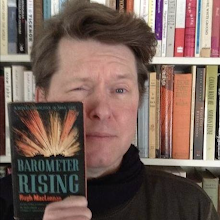Sixty-three years after it disappeared from drugstore spinner racks, Sugar-Puss on Dorchester Street is finally making its way to bookstore shelves. This is not your grandparents' Sugar-Puss, but a brand new edition with Introduction by Will Straw. Reset and printed on FSC certified paper, unlike the News Stand Library original this baby is built to last!
Much has changed since the story of young, innocent, farmette Gisele Lapine last saw print. Dorchester is not a street but a boulevard. No longer a centre of the city's nightlife, it's now a bloodless artery lined by some of the city's blandest buildings. Even the name is gone. The honour conferred upon Guy Carleton, 1st Baron Dorchester, the man credited with saving Quebec from the Americans during their Revolutionary War, has been stripped and given to a former United States Army liaison officer.
Enough. This is not a time for speeches. In celebration of her return, I present a Sugar-Puss Top Ten – favourite passages from the novel, beginning with the very first sentence:
1 - Dorchester Street spews out almost within shadow of the Harbour Bridge in Montreal’s slummy, crummy East End. Her spawning ground is wedged solidly between vermin-ridden tenements where French and English meet – but do not blend – and the greasy waters of the St. Lawrence River.
2 - Her eyes were large and softly brown as was her skin thereby hinting of a strain of Basque blood. Her breasts were large and firm; a legacy of her Norman ancestry. Long legs tapered off from well-rounded thighs to shapely ankles. Her feet were small and beautifully formed as are those of most French Canadian women.
3 - Bewildered Gisele looked at her newly acquired, giant-sized and self-appointed protector. He smiled back at her through a cloud of smoke. "It's okay, Honey. I'm Jim Schultz. I own this flea trap and you're safe here as you are in yah mudda's arms. Safer unless yah mudda'sgot cauliflower ears."
4 - The girl slouched against the bar beside her. "My name's Trixie. Helluva name that. Pop said he named me after a mongrel that died but Ma said it was a burlesque broad he used to sleep with."
5 - He turned slightly and looked down at her. The lamp cast a bluish glow across her flat stomach. It was like television, he thought.
6 - He didn't trust himself to speak. Instead he drank slowly looking into the light until his eyes blurred.
She whimpered like a spaniel. "Please, Jimmy."
7 - "Today, Gisele," she told herself, "you are a woman." She paused for some time reliving every one of the precious moments of the night. "You are," she said, "a young woman in love – and what's more you look it."
8 - "Gisele ma petite bebe you are the greatest thing to hit show business here since Fifi D'Orsay. You are superb, magnificent, you are – shall we say – tres, tres? A combination of Pavlowa and Mam'selle St. Cyr. You were great."
9 - Madame Lapointe had given the nearest possible example of a human being sparked with atomic power.
10 - "So she's still in the city," he thought grimly, "and so are a million and a half other souls – plus a few heels."
 |
| The Gazette, 2 November 1949 |
Related post:























